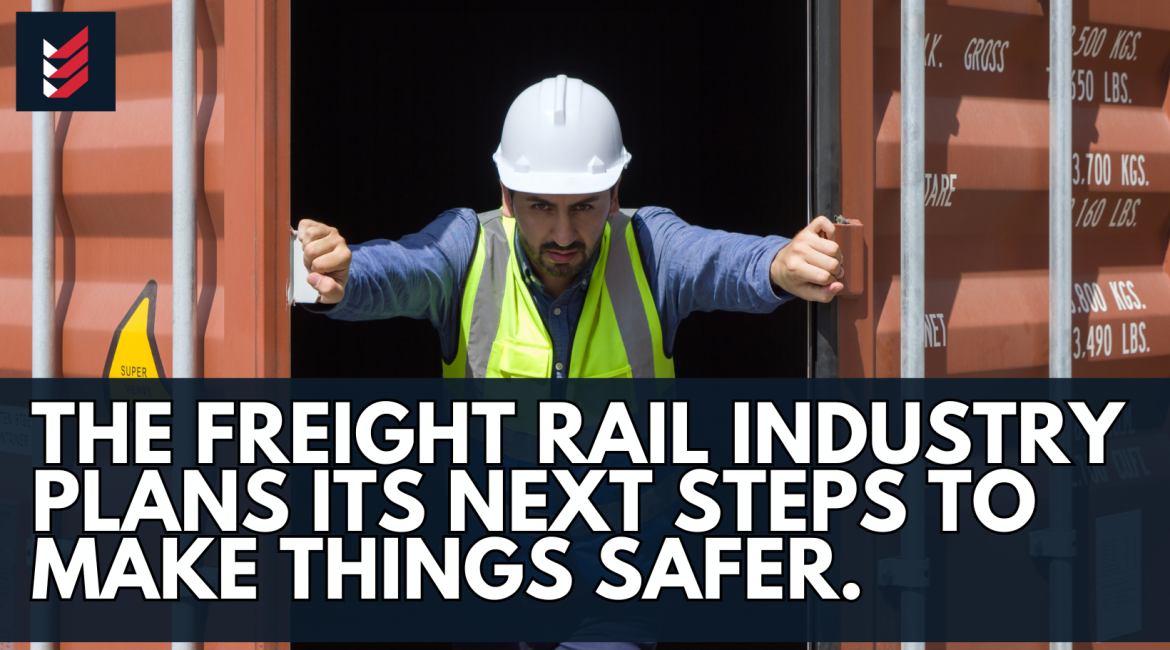The freight rail industry has laid out the next steps it will take to improve rail safety, such as installing about 1,000 new detectors along the tracks and making it easier for first responders to talk to them.
The freight rail industry is taking these steps in response to recent safety warnings from the National Transportation Safety Board. These warnings asked the rail industry to improve safety while waiting for the agency’s report on what caused a Norfolk Southern train to derail in East Palestine, Ohio, on February 3.
The freight rail industry aims to prevent future incidents like East Palestine by taking steps to restore trust and ensure zero derailments and injuries. This will help the march toward zero.”
The Class I railroads are part of the AAR, a trade group.
The AAR release says that the freight rail industry plans to deal with the following:
Wayside detectors should be spaced farther apart. Class I railroads plan to add more hot-bearing detectors, spacing them 15 miles apart. This will mean that about 1,000 new HBDs will be put into service.
The only time this rule doesn’t apply is if the route already has acoustic bearing detection or similar technology. The maximum HBD distance will be 20 miles, if terrain and conditions allow.
Class I railroads have installed HBDs on key routes, including hazardous materials routes, for decades. Place these HBDs no more than 40 miles apart.
Develop a new protocol to stop trains when HBD shows 170°F above ambient temperature.
Agree on interpreting HBD trend data to detect bearing issues before reaching critical temperatures.
HBDs have long been used, but recent software advancements enable predicting potential bearing issues through trending data. The Class I railroads are looking at the trending analysis programs they each use. They hope to have recommendations about how to use trending analyses by March 31.
Join a Department of Transportation program offering workers an anonymous hotline for operational problem tips.
Train 2,000 first responders at Colorado’s center; 20,000 will learn accident prevention strategies.
AAR wants first responders and fire associations to use the AskRail app more. This app, according to AAR, gives real-time information about what’s in each car of a train and how to handle it safely in case of an accident.
Think about making more improvements to tank cars. AAR’s tank car committee will accelerate research on heat-resistant gaskets for flammable liquids transport.
AAR’s commitment to safety exceeds federal standards, reflecting our belief in prioritizing rigorous measures. However, railroads are committed to taking the right steps now.
NS announced an expansion of its operational awareness program and a new first responder training center in Ohio. This program trains first responders for incidents on NS’s 22-state network.
The training center will serve emergency responders in Ohio, Pennsylvania, West Virginia, and surrounding areas. At the same time, the OAR program will travel from state to state. In 2023, NS plans for the program to make 12 stops, four of which will be in Ohio.
Alan Shaw, Norfolk Southern CEO, stated commitments followed discussions with Ohio Gov. Mike DeWine. All of these talks were about how to help better our first responders and the communities they serve. First responders need knowledge and tools to safely protect citizens during rail incidents.
CSX talks about safety measures
This week, CSX (NASDAQ: CSX) talked about some of the things it is doing to make rail travel safer.
First responders require essential knowledge and tools to effectively safeguard citizens during rail incidents and ensure public safety.
CSX also uses advanced risk assessment technology once a year to determine the quickest and safest ways to move dangerous goods. The railroad also says that it has trained first responders, contractors, and government officials on how to deal with hazardous materials.
CSX also said that in 2023, track, bridge, and signal projects would cost $1.7 billion out of a total budget of $2.3 billion.
CSX prioritizes safety as essential for teamwork and customer service, emphasizing worker and community well-being, according to CEO Joe Hinrichs.
On Wednesday, a rockslide caused a CSX train to go off the track in Sandstone, West Virginia. CSX said Thursday that it is working with the agencies that are helping and has taken safety steps to ensure that any diesel fuel that leaks out from the derailment doesn’t hurt the environment. CSX also said that two of the three crew members are still in the hospital but are not in danger of dying.
